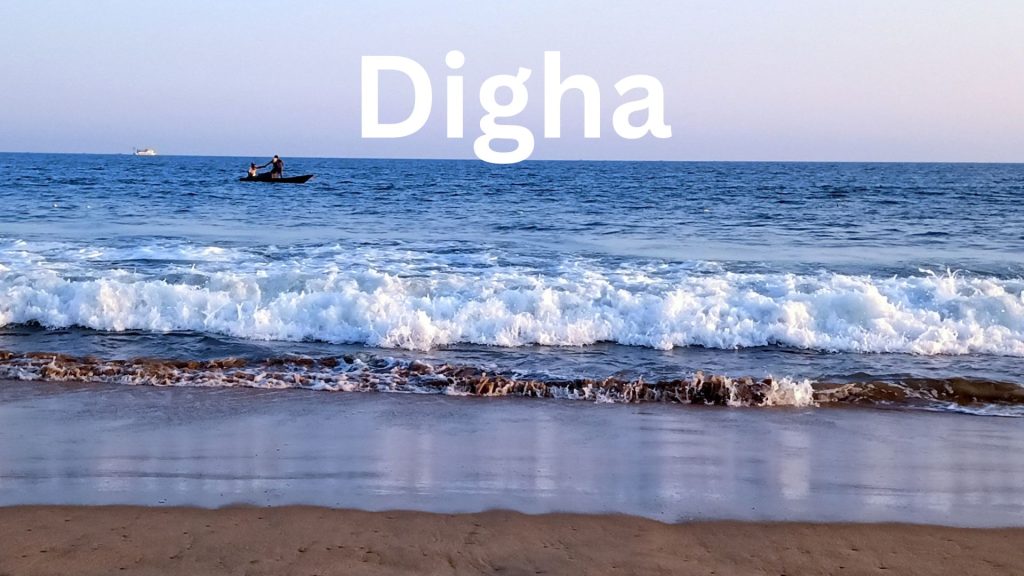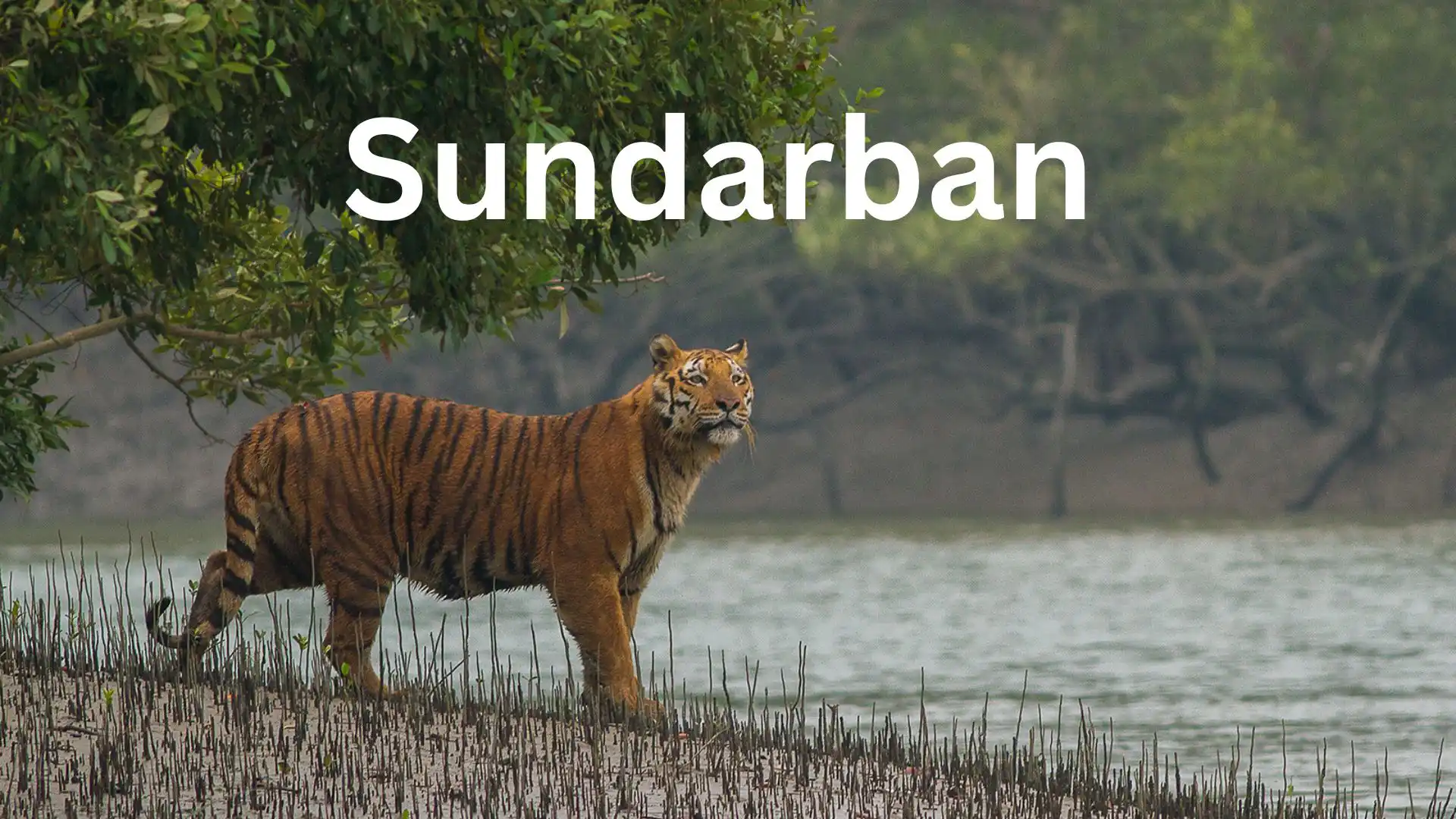
In the heart of Sundarbans, dense mangroves, roaring tigers, and winding rivers create a wild world of mystic beauty you’ll love to explore.
The Sundarbans National Park, a UNESCO World Heritage Site in West Bengal, India, is the world’s largest mangrove forest, spanning 10,000 square kilometers. This unique ecosystem, formed by the Ganges, Brahmaputra, and Meghna rivers, is home to the Royal Bengal Tiger, saltwater crocodiles, and diverse birdlife. A trip to the Sundarbans promises adventure, wildlife, and cultural immersion. Here’s a concise guide to help you plan your visit.
Why Visit the Sundarbans?
The Sundarbans offers a rare blend of nature and adventure. Its tidal waterways, mangrove forests, and elusive tigers make it a haven for wildlife enthusiasts and photographers. The region’s villages provide a glimpse into local life, adding cultural depth to your journey.
How to Reach the Sundarbans
By Air
Netaji Subhas Chandra Bose International Airport in Kolkata (110-166 km away) is the nearest airport. Taxis or buses from Kolkata reach entry points like Godkhali or Canning in 2.5-4 hours.
By Rail
Canning Railway Station (48 km from Godkhali) is the closest, connected to Kolkata’s Sealdah Station by local trains (1.5-2 hours). From Canning, take an auto-rickshaw or taxi to Godkhali or Sonakhali (30-60 minutes).
By Road
Kolkata is 64-130 km from entry points like Godkhali, Sonakhali, or Namkhana (2-4 hours by car or bus). Public buses run from Esplanade or Howrah, or hire a private taxi.
By Water
Boats from Godkhali, Sonakhali, or Namkhana are the only way to enter the Sundarbans. Motorboats or luxury cruises (e.g., WBTDC’s MV Chitralekha) take 1-2 hours to reach Sajnekhali or Gosaba.
Recommended Route:
Train from Sealdah to Canning, then a taxi to Godkhali, followed by a boat to Sajnekhali. Tour packages often include transfers and safaris.
Where to Stay
Comfort options:
Sajnekhali Tourist Lodge: A WBTDC-run lodge in the core tiger reserve, offering basic rooms near the Sajnekhali Watchtower. Price: ₹2,000-₹4,000 per night.
Hotel Sonar Bangla Sundarban: A luxury resort in Dulki with elegant rooms, cultural performances, and guided tours. Price: ₹8,999-₹12,000 per person for a 2N/3D package.
Budget friendly:
Sundarban Natural Homestay: Located in Gosaba, this budget-friendly homestay provides a cozy, authentic experience with clean rooms, home-cooked Bengali meals, and proximity to the Sundarbans National Park. Price starts from ₹700 per night.
Sundarban Tulip Homestay: Situated in Pakhiralay, Purbbadulki, this homestay offers modern amenities like AC, Wi-Fi, Smart TVs, and private bathrooms with geysers. Price starts from ₹1200 per night.
Best Time to Visit Sundarbans
The Sundarbans is accessible year-round, but the best time to visit is October to March, when the weather is pleasant (20°C-30°C) and wildlife sightings are more frequent. The monsoon season (June to September) brings heavy rainfall and high humidity (up to 80%), which can make boat travel challenging but offers lush greenery and its’s time for Ilish Utsav(Hilsa festival). Summers (April to May) are hot (up to 48°C) and less comfortable but ideal for budget travelers due to lower crowds.
Key Attractions in the Sundarbans
The Sundarbans is dotted with watchtowers, sanctuaries, and cultural sites that offer unique perspectives of its ecosystem. Below is a comprehensive list of must-visit places:
1.Sajnekhali Watchtower and Bird Sanctuary
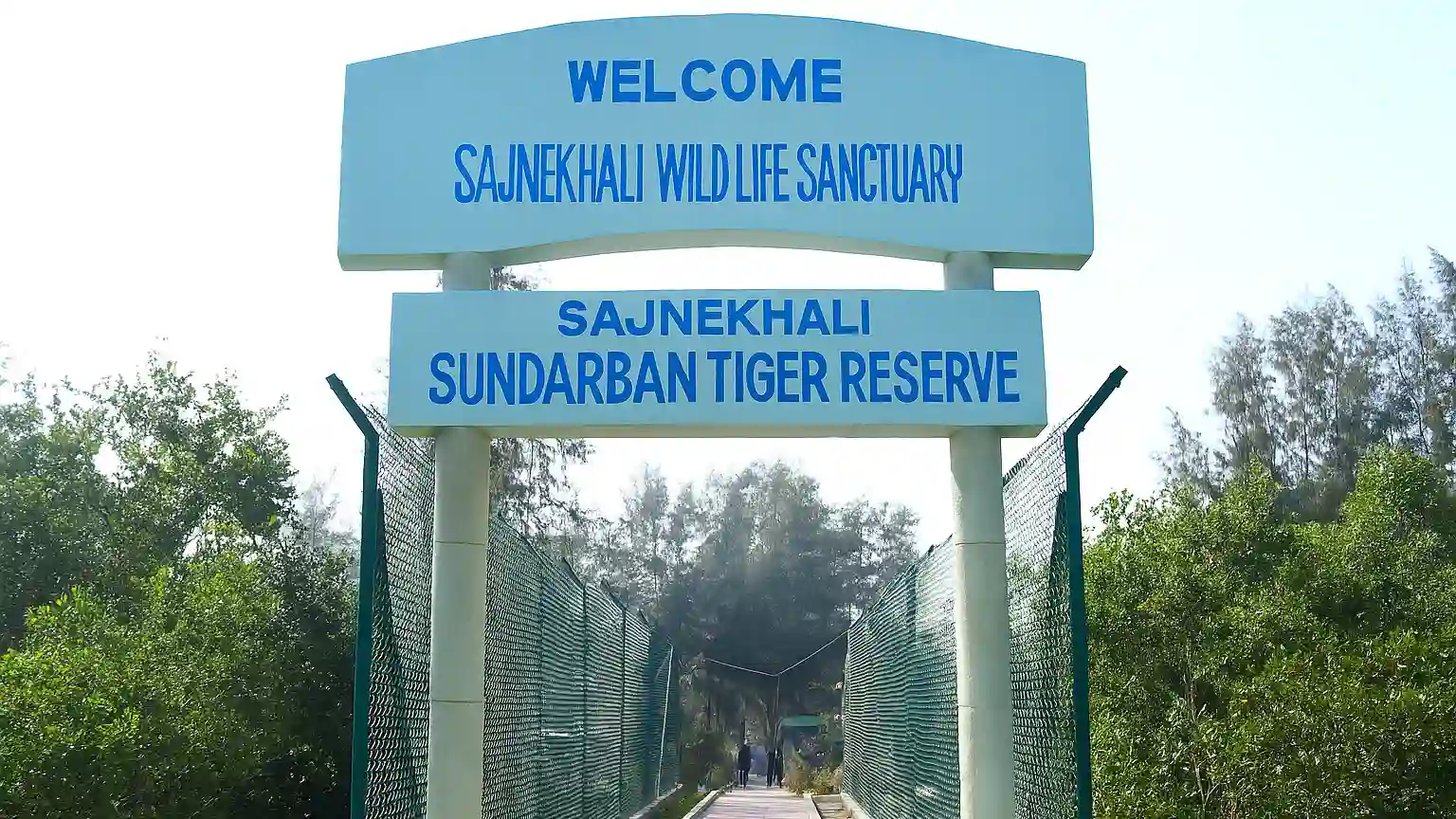
Located in the northern part of the Sundarbans, Sajnekhali is a prime entry point and a hub for tourists. The watchtower offers panoramic views of the mangrove forests and is a hotspot for birdwatching, with species like the brahminy kite, whistling teal, and kingfishers. The sanctuary also houses a Mangrove Interpretation Centre, where visitors can learn about the ecosystem and conservation efforts. A permit office for the Sundarban Tiger Reserve (STR) is located here, making it a practical starting point for safaris.
2. Sudhanyakhali Watchtower
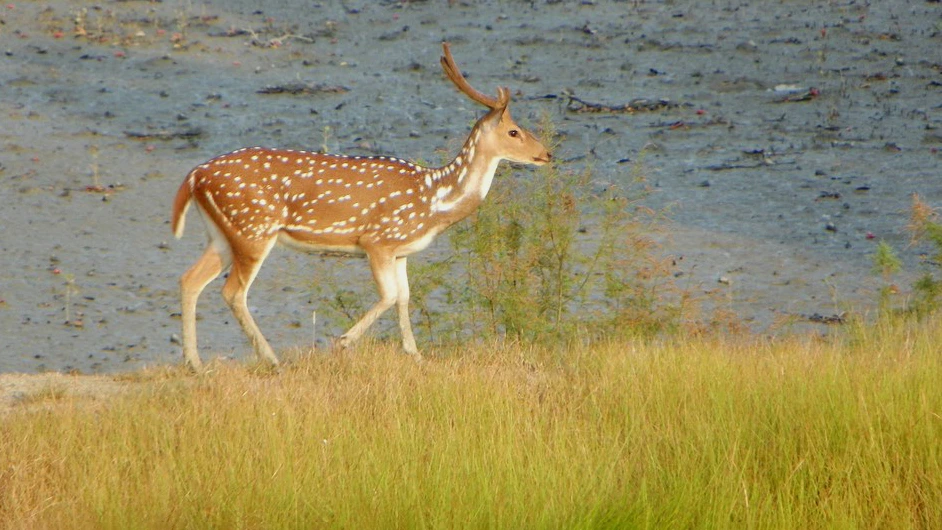
A 40-minute boat ride from Sajnekhali, Sudhanyakhali is one of the best spots for tiger sightings, though patience is key as these elusive creatures blend seamlessly into the mangroves. The watchtower overlooks a freshwater pond frequented by wildlife, offering excellent opportunities to spot deer, wild boars, and occasionally tigers. The area is serene, with the gentle lapping of water and bird calls creating a tranquil atmosphere.
3. Dobanki Watchtower and Canopy
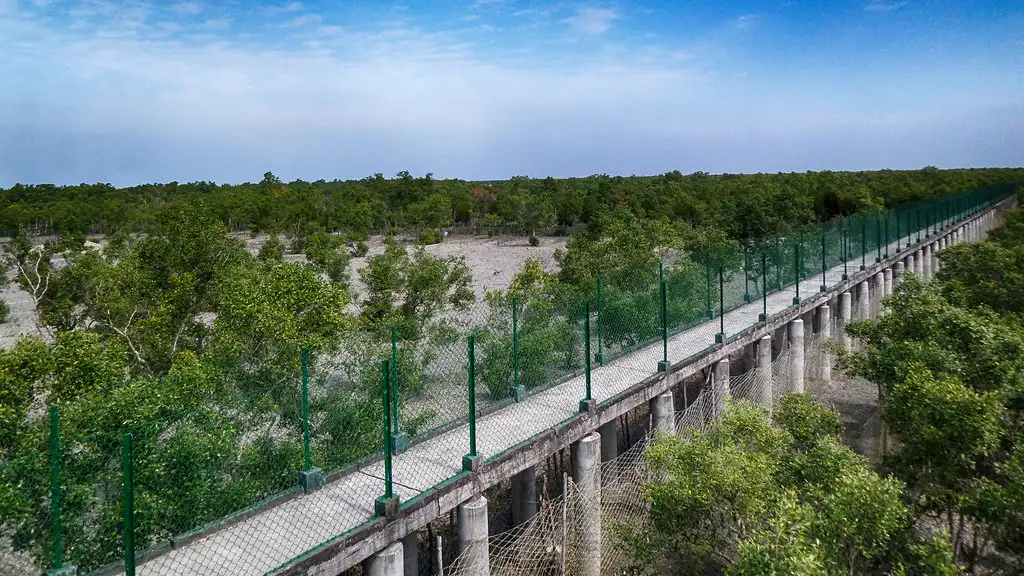
Walk For an immersive experience, Dobanki features a 400-meter-long canopy walkway elevated above the mangroves, offering a unique vantage point to observe the forest’s flora and fauna. The watchtower here is equipped with a viewing platform that can accommodate up to 20 people, providing views of the dense forest and tidal creeks. The canopy walk is a thrilling way to feel closer to the ecosystem, with sightings of crabs, snails, and birds like the white-bellied sea eagle.
4. Burirdabri Watchtower and Raimongal View Point

Located near the Bangladesh border, Burirdabri is known for its watchtower, mud walk, and mangrove cage trail leading to the Raimongal View Point. This trail allows visitors to walk through the muddy terrain, spotting crabs, molluscs, and other small creatures. The watchtower offers a rare glimpse into the Bangladesh Sundarbans, highlighting the transboundary nature of this ecosystem. The area is also culturally significant, with local folklore adding a mystical charm.
5. Netidhopani
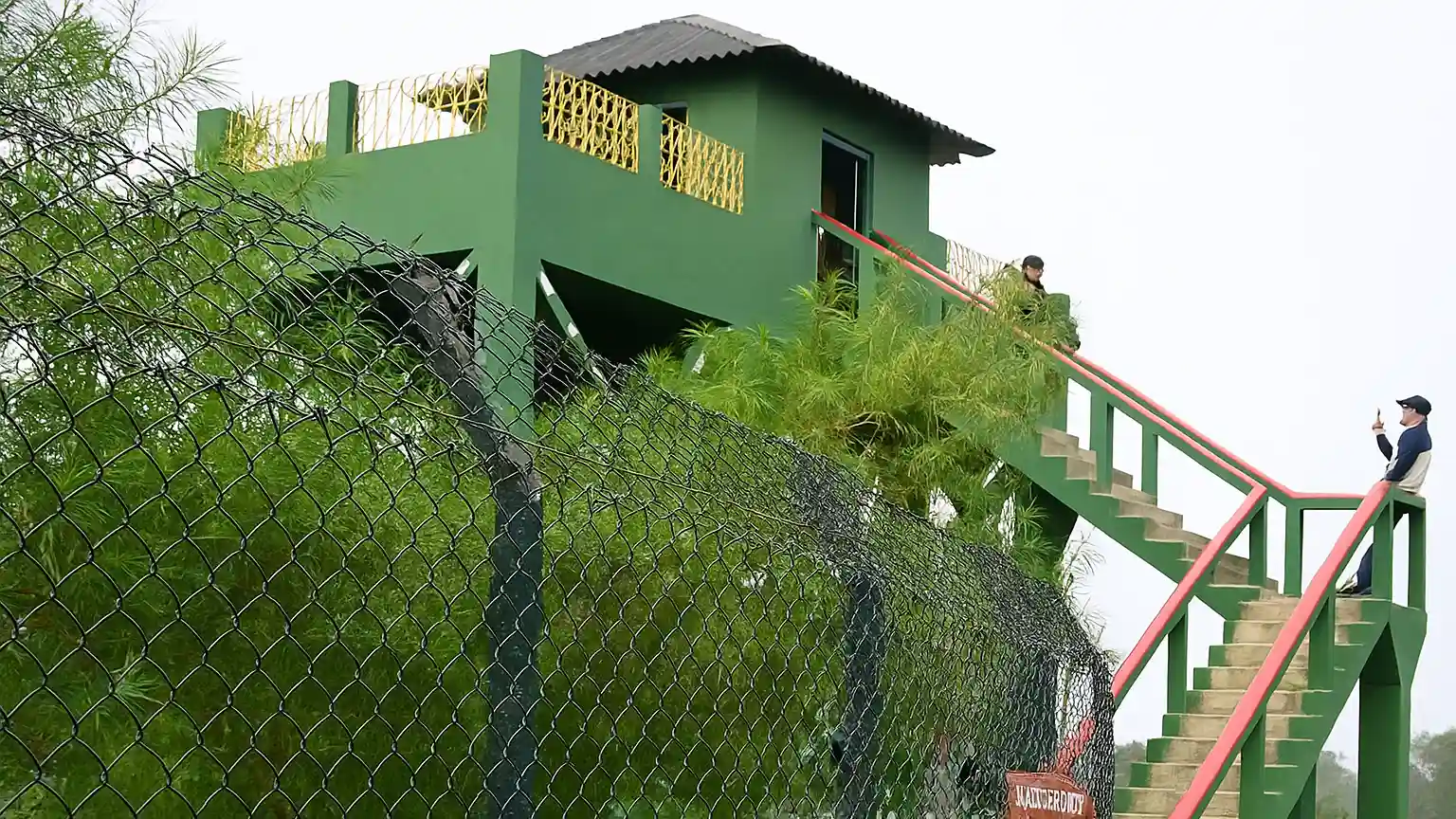
Steeped in legend, Netidhopani is mentioned in the Bengali fable of Behula and Lakhindar, where Behula supposedly brought her husband back from life at this ghat. The watchtower here offers views of the mangrove forests and is a quieter spot, ideal for those seeking solitude. The area is part of the core tiger reserve, increasing the chances of spotting wildlife, though tigers remain elusive.
Ticket: Additional entry fee ₹300 per day for Indian tourists and ₹1000 per day for foreigners.
You may also read on Ghatshila – https://www.travelseek.in/ghatshila-diaries-uncover-its-peaceful-hidden-gems/
6. Bhagabatpur Crocodile Project

Located near Namkhana, the Bhagabatpur Crocodile Project is a conservation initiative focused on protecting saltwater crocodiles. Visitors can observe these fascinating reptiles in their natural habitat and learn about their role in the ecosystem. The project is a 2.5-hour boat ride from Namkhana, making it an exciting addition to a Sundarbans itinerary.
7. Jharkhali

Accessible via Canning or Basanti, Jharkhali is a lesser-visited entry point that offers a serene boat ride through the Horadanga and Suryamukhee canals to the Matla and Bidyadhari rivers. This route is ideal for spotting the Royal Bengal Tiger and visiting Kalas Island, a pristine area with minimal tourist footfall. Jharkhali also has a tiger rehabilitation center, adding an educational element to the visit.
8. Kalas Island
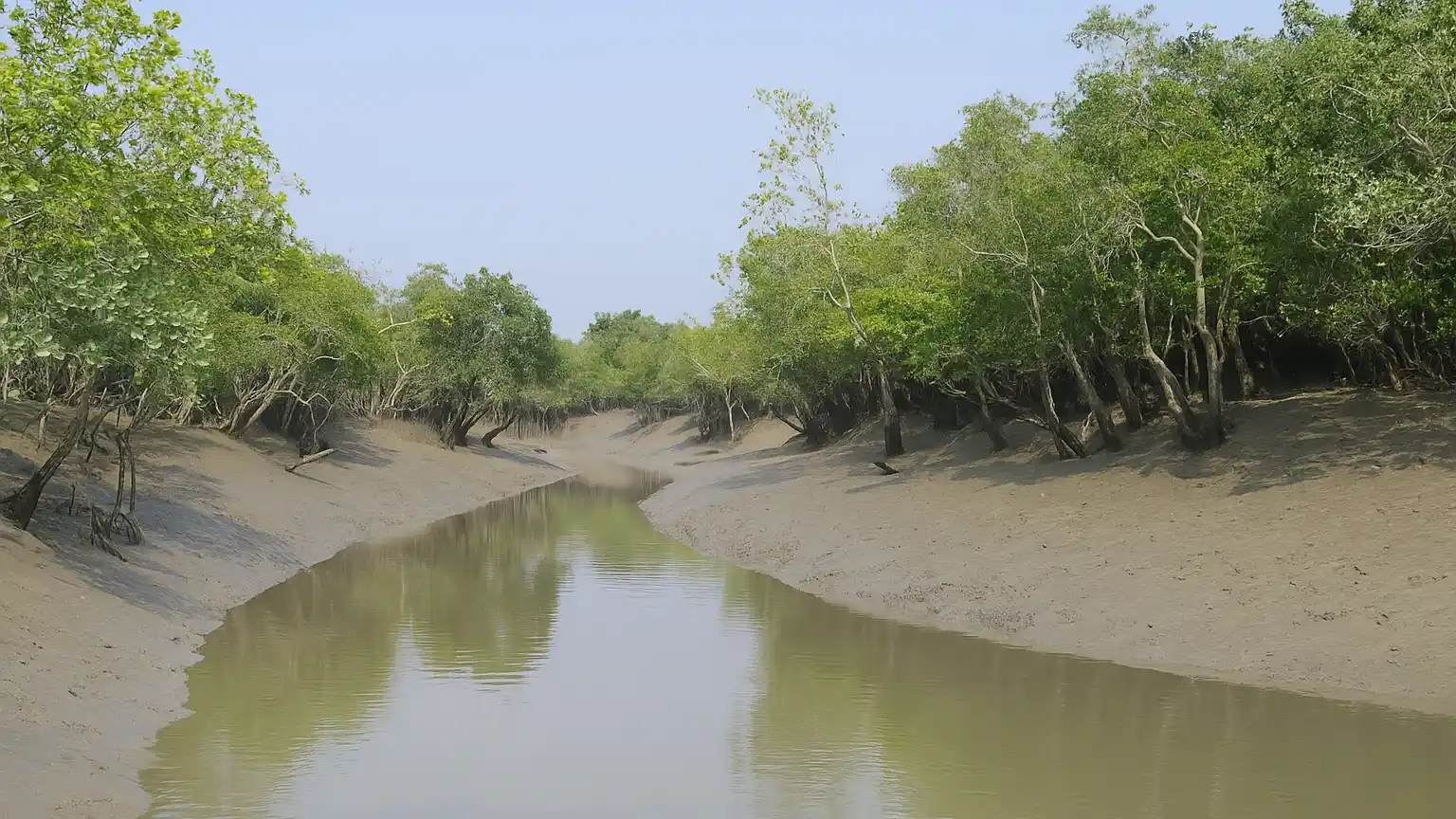
A hidden gem, Kalas Island is accessible from Jharkhali and offers untouched beauty. The island is surrounded by narrow creeks and dense mangroves, making it a haven for birdlife and smaller mammals. It’s an ideal spot for those seeking an off-the-beaten-path experience.
Note:
All tourist spots and watchtowers within Sundarban National Park are open to visitors during daylight hours. The entry fee, which covers access to several spots and watchtowers inside the park, is ₹180 per Indian tourist and ₹1,000 per foreign tourist. Additionally, hiring a guide is mandatory, with charges of ₹800 for Indian tourists and ₹2,000 for foreign tourists per day.
9. Local Villages and Cultural Experiences

The Sundarbans is home to resilient communities living on the edge of the forest. Visiting villages like Gosaba, Pakhiralay, or Dulki offers insight into the local way of life. Engage in sustainable tourism by opting for homestays, tasting local cuisine (like fresh honey and Machher Jhol), and witnessing traditional tribal dances. These interactions provide a deeper understanding of the region’s culture and the challenges faced by its inhabitants.
10. Other Notable Spots
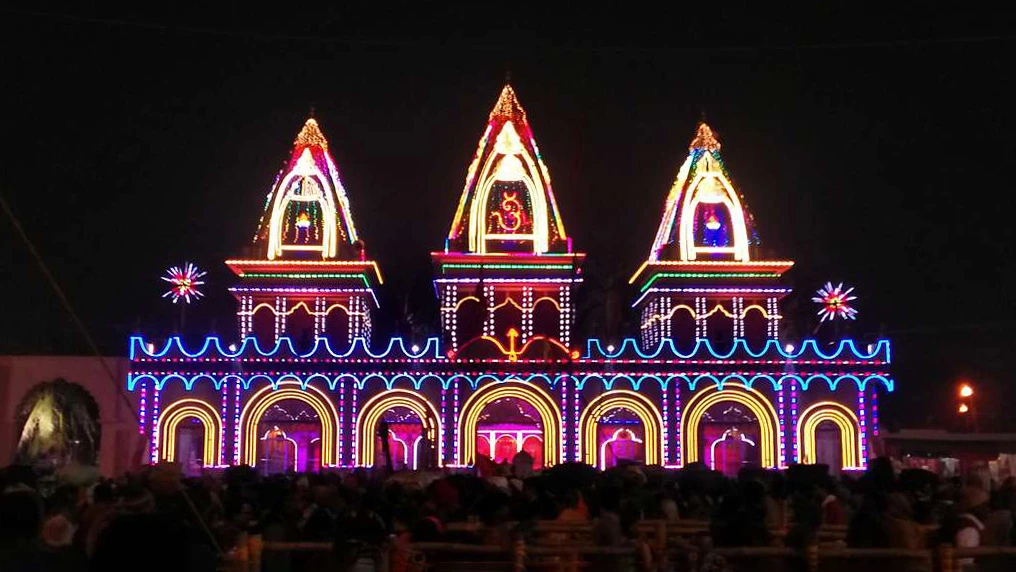
Holiday Island: A 3-hour boat ride from Sajnekhali, this area is known for its scenic waterways and potential for wildlife sightings.
Jambudwip: A 3.5-hour boat ride from Namkhana, this island is a fishing hub and offers a glimpse into the region’s marine life.
Sagar Island: Located 2.5 hours from Namkhana, this island is a pilgrimage site and a gateway to the Sundarbans, known for its beaches and the Kapil Muni Temple.
Our suggestion for a 3D/2N Trip
Day 1: Arrival and Sajnekhali
Morning: Depart from Kolkata (by train to Canning or car to Godkhali).
Afternoon: Board a boat to Sajnekhali, check into the lodge or resort, and visit the Sajnekhali Watchtower and Bird Sanctuary.
Evening: Enjoy a cultural performance or relax at your accommodation.
Day 2: Core Sundarbans Exploration
Morning: Boat safari to Sudhanyakhali and Dobanki, including the canopy walk.
Afternoon: Visit Netidhopani for a quieter experience and explore local waterways.
Evening: Return to your accommodation for dinner and rest.
Day 3: Burirdabri and Departure
Morning: Boat ride to Burirdabri for the watchtower and Raimongal View Point.
Afternoon: Visit a local village or the Bhagabatpur Crocodile Project (if time permits).
Evening: Return to Godkhali by boat and travel back to Kolkata.
Must-try Local Foods of Sundarbans

Bhapa Ilish (Steamed Hilsa) – A quintessential Bengali dish featuring Hilsa fish, known as the “queen of fish.” It’s marinated with mustard paste, green chilies, yogurt, and sometimes coconut, then steamed in banana leaves for a rich, aromatic flavor. Best paired with steamed rice, it’s a highlight during the Hilsa season.
Amudi Fish Fry – Amudi, a soft-boned saltwater fish, is rubbed with basic spices and deep-fried.
Pithas – Traditional winter sweets made in various flavors (sweet, salty, or spicy). These rice or flour-based treats, often filled with coconut or jaggery, are a must-try for their diversity.
Misti Doi – Sweet, creamy yogurt dessert that’s a Bengali classic. Its rich, tangy-sweet flavor is a delightful end to a meal in the Sundarbans.
Sundarbans Honey – Last but not the least , try Sundarbans Honey it’s collected by local “Moualis” from mangrove flowers (like Khlashi and Goran), this pure, medicinal honey has a unique flavor. It’s used in dishes or enjoyed alone for its health benefits.
Many Sundarbans tour packages from Kolkata include meals featuring these dishes, often served on boats or at resorts. Resorts like Sundarban Tiger Camp or Sundarban Chital Hotel serve fresh seafood and local dishes.
Practical Tips
Permits: Required for the tiger reserve; obtain at Canning, Sonakhali, or Bagna.
Pack: Light clothing, insect repellent, sunscreen, hat, medications.
Safety: Follow guides, avoid littering, respect wildlife.
Connectivity: Limited mobile coverage; share your itinerary in advance.
Conclusion
A journey through the Sundarbans is not just a trip — it’s an experience that immerses you in nature’s rawest, most untamed beauty. From winding rivers and dense mangroves to the elusive glimpse of a Royal Bengal Tiger, every moment here leaves you with stories to cherish.
Stay connected with Travelseek for more such soulful explorations and travel inspirations. Let’s keep discovering the unexplored, together. Fell free to leave a comment that encourage us to bring more helpful articles for you.
Sundarban Ilish Utsav, source Youtube – https://youtu.be/li-_kDKenx8?si=aX4QihV5oIaMf2MO


